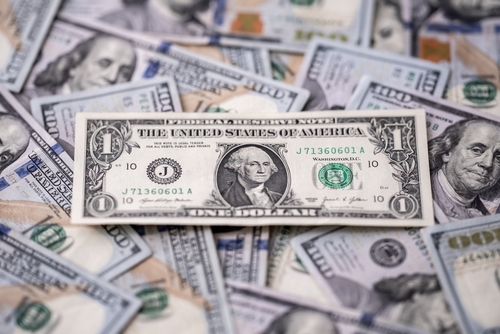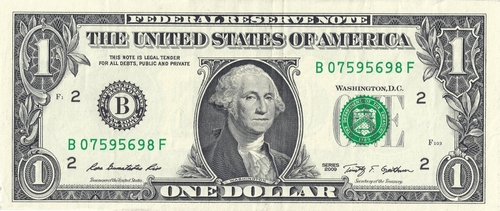The United States dollar (USD) is one of the most recognized and widely used currencies in the world. It plays a central role in global trade, finance, and everyday transactions, from shopping in the US to exchanging money abroad.
Because of its stability and trustworthiness, many countries use or accept the dollar alongside their local currencies. Understanding its value and influence helps explain why it’s often seen as the world’s leading currency.
Whether you’re sending money to loved ones, traveling internationally, or simply curious about how currencies work, learning the basics of the US dollar can make a big difference. The dollar’s importance goes beyond national borders, affecting exchange rates and the way money moves across countries.
This Remitly guide will walk you through everything you need to know about the United States dollar. You’ll learn about its history, global reach, and how it became such an influential part of the world economy. We’ll also explain how you can send and receive international money transfers in USD safely and easily using trusted services. By the end, you’ll have a clear understanding of how the dollar works and how it fits into your financial life.
What is the United States dollar (USD)?
The United States dollar (USD) is the official currency of the United States and its territories, serving as the foundation of the country’s financial system. Recognized by the currency code “USD” and the symbol “$”, it’s also the most widely used international currency in the world. Whether it’s for trade, savings, or travel, the dollar plays a key role in everyday economic life both in the US and internationally.
US banknotes (dollar bills) come in six main denominations: $1, $2, $5, $10, $20, $50, and $100. Each bill features prominent figures from American history and symbols of national heritage. Coins are issued in 1 cent, 5 cent, 10 cent, 25 cent, 50 cent, and $1 values, and they’re commonly referred to as the penny, nickel, dime, quarter, half dollar, and dollar coin. While larger coins are less common in daily use, all remain legal tender.
Together, these coins and bills represent more than just a means of payment: they also symbolize the economic strength and stability of the United States. The dollar’s consistent design and value make it trusted around the world, used by millions of people for business, savings, and remittances.

A brief history of the US dollar
The birth of the dollar
The story of the dollar begins in 1792, when the Coinage Act established the United States dollar as the nation’s standard unit of money. This law created the US Mint and defined the dollar’s value in terms of gold and silver, ensuring that every coin carried real worth.
Modeled after the Spanish silver dollar, it became the foundation for America’s monetary system and a key symbol of the young nation’s independence. Over time, the dollar evolved from metal coins to the paper currency and digital forms we know today.
The dollar goes global
As the US economy expanded, the dollar’s influence grew far beyond its borders. In 1944, the Bretton Woods Agreement cemented the US dollar as the world’s primary reserve currency, linking other major currencies to it while the dollar itself was tied to gold. This system positioned the USD at the center of global trade and finance, making it the benchmark for international exchange rates.
Even after the US moved away from the gold standard in the 1970s, the dollar’s reputation for reliability endured.
The dollar today
Nowadays, the US dollar is made by the Bureau of Engraving and Printing, and it remains one of the most stable and trusted currencies in the world. Central banks hold large reserves of USD to safeguard their economies, and global markets rely on it as a measure of value and security.
This deep-rooted history explains why the dollar continues to be seen as a symbol of economic strength and trust worldwide and its consistency over centuries has made it not only America’s currency but also the world’s financial anchor.

Countries that use the US dollar
The United States dollar is not only used within the US but also serves as the official currency in several other countries and territories around the world.
Dollarization and dollarized economies
Nations such as Ecuador, El Salvador, and Panama have fully adopted the USD, while US territories, including Puerto Rico, Guam, and the US Virgin Islands, naturally use it because of their direct economic and political ties to the United States.
This practice, known as “dollarization,” occurs when a country replaces its local currency with the US dollar to stabilize its economy, reduce inflation, and build investor confidence.
For many nations, especially those that have faced economic crises or volatile exchange rates, using the dollar offers a way to restore trust and simplify international trade. Dollarization can also make cross-border transactions smoother and more predictable, particularly in regions that depend on remittances or tourism.
Countries that accept the dollar informally
Beyond officially dollarized economies, the US dollar is widely accepted for tourist and business transactions in many parts of the world.
In places like Mexico, Cambodia, and the Bahamas, hotels, restaurants, and major retailers often list prices in USD alongside the local currency. This informal use reflects the dollar’s global dominance, because its value and familiarity make it convenient for travelers and businesses everywhere.
How to send and receive the United States dollar
Sending and receiving United States dollars (USD) is a simple and secure process, especially when you use a trusted service like Remitly.
Whether you’re sending money to loved ones in the US or transferring funds abroad, Remitly makes it easy to move your money safely and with confidence. The platform is designed for convenience and peace of mind, offering clear exchange rates, affordable fees, and reliable delivery times. You can even send money to someone who doesn’t have a bank account.
Here’s how it works:
- Create an account. Sign up on the Remitly website or app and complete a quick identity verification process to ensure your transactions are safe.
- Enter the transfer amount and recipient details. Specify how much you want to send and provide accurate information for the person receiving the money.
- Choose a delivery method. Depending on the destination, you can select from options like bank deposit, cash pickup, mobile money, or home delivery.
- Confirm and send. Double-check the details, send the transfer securely, and track its progress in real time.
Each step in the process is designed to keep your money secure and ensure it arrives as expected. Remitly uses strict safety standards and encryption to protect your personal information, and transfers can be tracked from start to finish. With these safeguards in place, you can send USD confidently, knowing your funds are handled reliably and with care.
Key takeaways about the US dollar
The United States dollar is a major global currency with a long and influential history. From its creation in 1792 to its role as the world’s primary reserve currency, it has shaped economies, trade, and financial systems across the globe.
Today, the USD remains trusted and widely used—not only in the United States but also in many other countries where it serves as an official or preferred currency. Its stability and reach make it a cornerstone of the modern financial world.
Understanding how the dollar works helps you make more informed choices, whether you’re saving, traveling, or sending money across borders.
Fortunately, when you use a trusted international transfer service, sending and receiving USD becomes a simple and reliable process. With clear exchange rates, secure transactions, and on-time delivery, Remitly helps you transfer US dollars with confidence.
FAQs
What is the symbol for the United States dollar?
The US dollar is represented by the “$” symbol, and its international currency code is “USD.” These identifiers are used in banks, online transfers, and exchange markets around the world.
Why is the United States dollar so important?
Because it serves as the world’s primary reserve currency, the dollar underpins global trade and finance. Many countries hold large amounts of USD as a safeguard against economic uncertainty.
Can I send money to the US from another country?
Yes. Services like Remitly make it easy to send money (even large transfers) to the US with transparent fees, real-time tracking, and guaranteed delivery.

